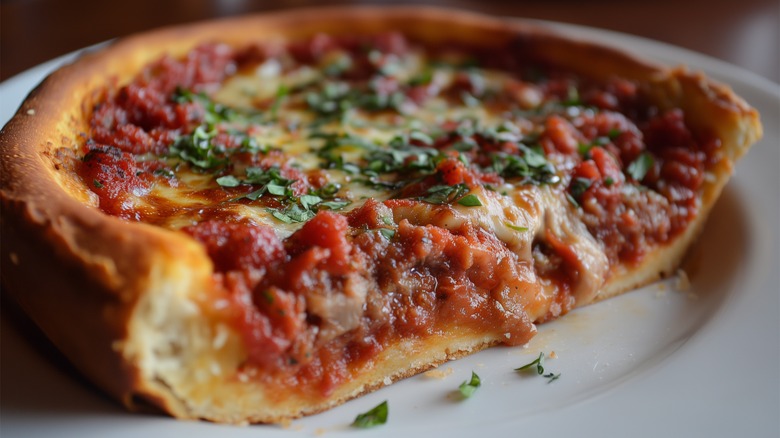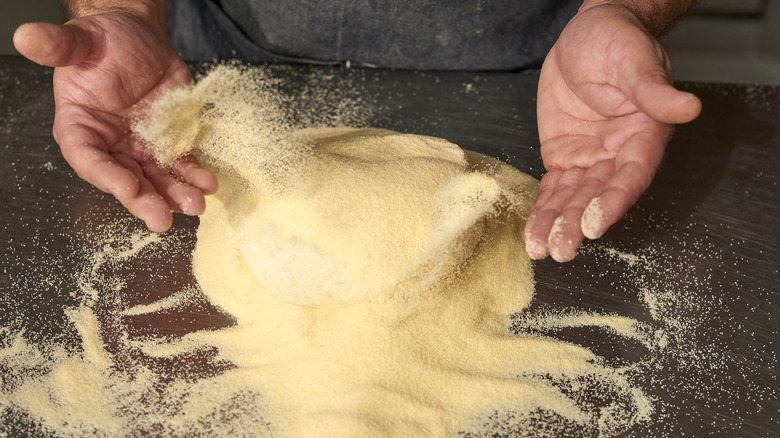Why Semolina Flour Is A Crucial Ingredient For Fluffy Deep Dish Pizza
Whenever you make pizza, there's a pressure to get it right; that's why there are so many elusive family recipes and secret hacks. Craving that perfect fluffy texture? The trick is to use semolina flour. Semolina comes from harder durum wheat and has coarse granules, resulting in larger air gaps in the baked dough. While this creates a satisfying crunch on the exterior, the inside becomes wonderfully light — ideal for deep-dish variations.
Another reason semolina flour is perfect for deep-dish pizza is that it has a higher percentage of gluten and better absorbs water than other flours. The result is an elastic and well-hydrated dough, which does wonders for the final fluffy effect. And with low starch levels, it's also more resistant to becoming claggy or gummy. For a hefty Chicago-style pizza, you really can't beat it. The flour is a one-way ticket to a light-textured masterpiece.
Knowing the right flour matches for your desired pizza type is one route to that magical aim of getting pizza right. That's on top of a whole heap of other tips you need when making pizza crust, and even more specifically, advice for making deep-dish pizza.
Other ways semolina flour impacts pizza
Semolina flour isn't just a one-trick pony; it does far more than only create fluffy pizzas. Nutritionally speaking, it is a great source of magnesium, fiber, iron, zinc, and protein. Compared to all-purpose flour, it contains harder-to-find nutrients like vitamin E, pantothenic acid, and valine. There's also a distinctive variation in its flavor, as it imparts a slight nutty quality to the crust. Semolina flour proves how small ingredient choices can create huge differences in pizza recipes.
And where do you go from there? Well, you can spice things up (maybe literally) by trying out some ways to add more flavor to your pizza crust. Or move away from the traditional hand-kneading of dough by using a food processor to make perfect pizza dough in a snap. What's for sure is that semolina is a vital ingredient across traditional Italian cuisine. It can be used to make certain pasta types, as well as couscous and polenta, and is also sometimes present in focaccia and ciabatta breads.

